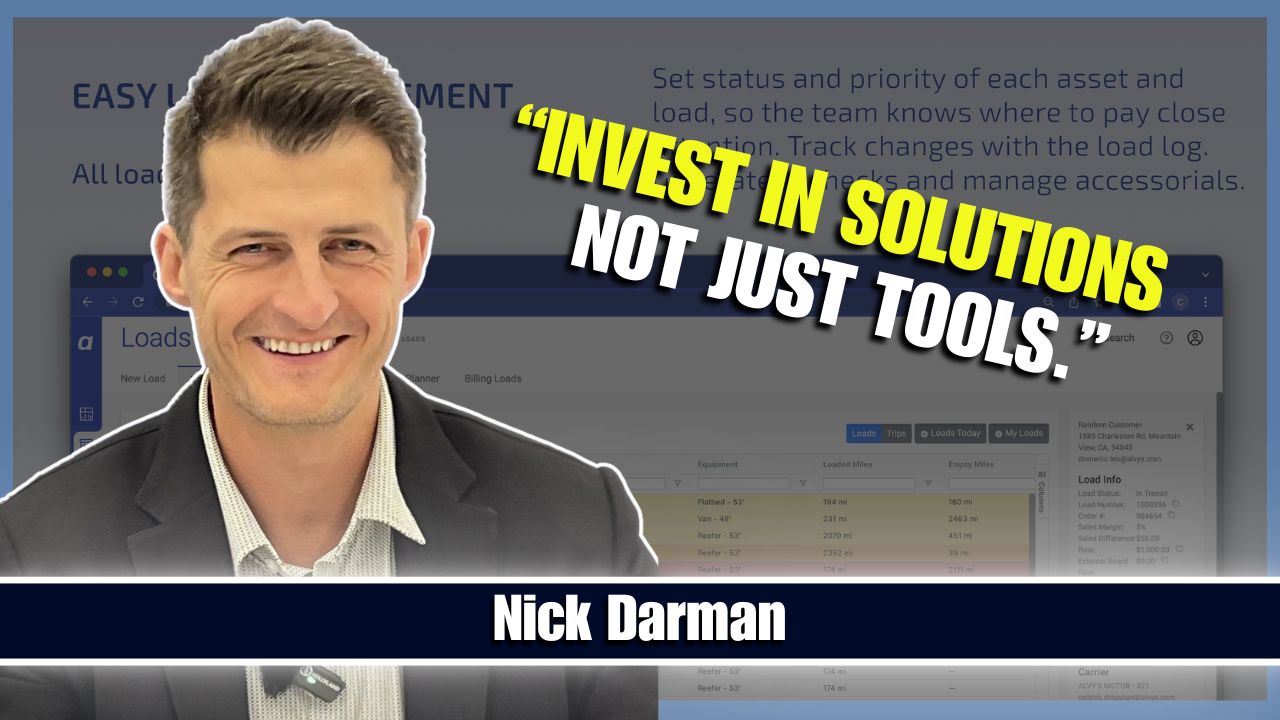One of the fastest ways to fail in trucking is to keep moving freight without understanding what it actually costs to run your truck. Many new owner-operators assume that if they’re rolling, they’re making money. But as Hoyt Moore explained in Episode 5 of the Miles and Mentors Podcast, that mindset can lead you straight into burnout—or worse, bankruptcy.
Hoyt runs a successful fleet today, but he started with one truck, just like most people. What helped him survive wasn’t luck. It was discipline, data, and knowing his numbers down to the cent. And for him, that starts with cost per mile.
This article breaks down what CPM really means, how to calculate it, and why it’s a non-negotiable part of building a profitable trucking business.
You can’t price loads until you know your cost
When Hoyt mentors new carriers, one of the first questions he asks is, “What’s your cost per mile?” Too often, the response is either a blank stare or a rough guess. That’s not good enough.
Cost per mile is the foundation for every rate you quote, every lane you accept, and every decision you make about your time. If you don’t know what it costs you to operate, you’re setting rates based on emotion, competition, or guesswork. And in a volatile market, that’s a quick way to haul cheap freight and lose money while staying busy.
Hoyt made this clear during the episode. “If you don’t know your cost per mile,” he said, “you have no idea what you’re actually making.”
How Hoyt tracks cost per mile in his business
Hoyt doesn’t just talk about cost—he tracks it actively. For years, he’s used spreadsheets and QuickBooks to monitor expenses and profitability, whether he was running one truck or managing a fleet.
He breaks costs into two major buckets:
-
Fixed costs – Truck payments, insurance, permits, and other recurring overhead
-
Variable costs – Fuel, maintenance, tires, tolls, and repairs
These are totaled and divided by the number of miles driven in a given time period to determine the true cost per mile. This isn’t something Hoyt checks once a year. It’s part of his ongoing business operation, because small shifts in spending or mileage can change the math quickly.
Paying yourself right starts with CPM
One of the most overlooked parts of cost per mile is owner pay. Hoyt doesn’t just focus on profit. He factors in a line item for his own compensation, because the business needs to support the operator—not just break even.
He pays himself a set rate per mile, just like he would a driver. That money goes into a personal account, while the rest stays in the business. It’s a method that helps separate personal and business finances and creates a more sustainable structure. Without that, Hoyt says, “You’ll keep pulling from the business until there’s nothing left.”
This mindset shift—from surviving load to load, to building a real business—starts with treating your pay as part of the cost structure.
CPM helps you identify where you’re bleeding money
When you track cost per mile consistently, patterns emerge. You’ll spot when fuel expenses spike, when repairs are eating into margins, or when you’re hauling too many cheap loads just to stay moving.
Hoyt emphasized that numbers don’t lie. When his costs started creeping up, it pushed him to make smarter choices about equipment, lanes, and even drivers. Without that data, those small leaks would have continued unnoticed. With it, he could course-correct in real time.
Don’t wait until you’re in trouble to run the numbers
Many carriers only start tracking costs when cash flow gets tight. By then, it’s often too late. Hoyt’s advice? Start tracking from day one. Even if you’re only running a single truck, use a spreadsheet or accounting software to record every expense, from fuel receipts to maintenance bills. Then revisit those numbers every week or month—not just during tax season.
This habit doesn’t just help you price better. It gives you confidence when negotiating, clarity when planning, and control when the market shifts.
Need more mentor advice?
Cost per mile isn’t a back-office exercise—it’s the steering wheel for your business. If you don’t know it, you’re not in control. But if you do, you can make smart decisions, weather downturns, and build something that lasts.
At Miles and Mentors, we believe carriers deserve better than guesswork. That’s why we bring you real-world insight from leaders like Hoyt Moore, who’ve built successful operations one decision at a time. If you want help calculating your cost per mile, structuring your business for profit, or connecting with partners who can guide your growth, fill out the form below. And don’t forget to subscribe to the podcast for more mentorship you can actually use.



